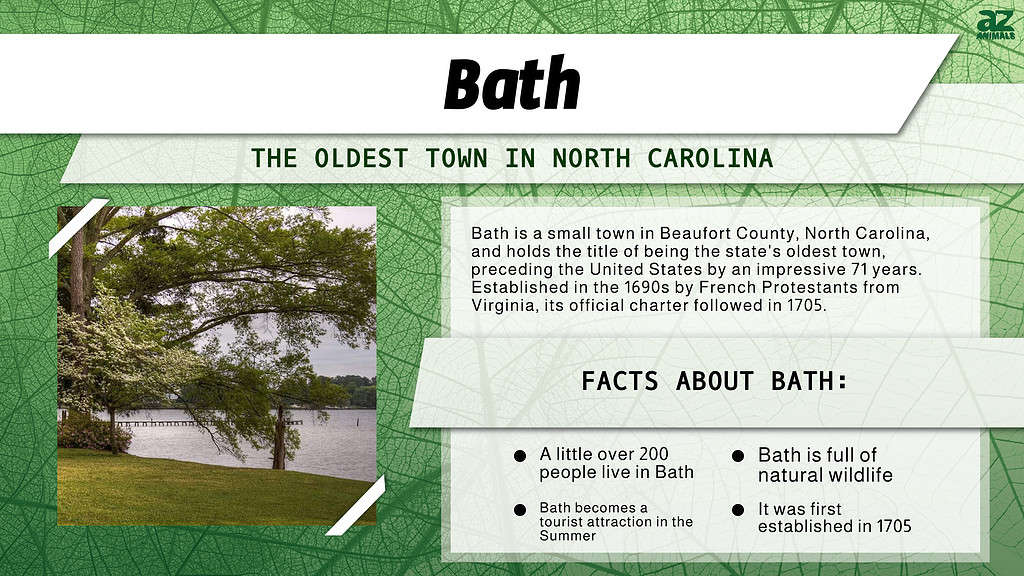
The United States isn’t an old country. In fact, it’s one of the newest countries in the world. Many of the cities and towns within the U.S. are older than the country itself! This includes the oldest town in North Carolina.
It’s 71 years older than the country! Follow along to learn more about the oldest town in North Carolina.
What is the Oldest Town in North Carolina?
The oldest town in North Carolina is Bath in Beaufort County. It’s 71 years older than the United States! This small town was chartered on March 8, 1705, however, European settlers lived in the area during the 1690s.
The first European settlers were mainly French Protestants from Virginia. Bath, North Carolina grew very quickly and by 1708 there were 12 houses and a population of 50. Interestingly, Bath was previously the nominal capital of North Carolina from 1705 to 1743. An early and important settler was John Lawson.

Bath is the oldest town in North Carolina.
©David Byron Keener/Shutterstock.com
About Bath, North Carolina
Currently, a little over 200 people live in Bath. The surface area of this small town is 0.92 square miles and over half of the surface area is water. Bath is a unique town, not just because it’s North Carolina’s first town. Blackbeard, the notorious English pirate, is said to have briefly settled in Bath in 1718.
Best Time to Visit Bath
While Bath isn’t a major city in North Carolina, it’s attracted the attention of history lovers. During the summer, tourism picks up. The best time to visit North Carolina depends on your interests and heat tolerance.
This southern state is hot and humid, experiencing temperatures as high as 110 °F. The busiest months in Bath are June through August, and this tends to be the most expensive and hottest time. If you want low crowds and cooler temperatures, you’re better off visiting during September through November and early spring.
Things to do in the Oldest Town in North Carolina
Walking the streets of Bath, North Carolina can make you feel like you’ve gone back in time. Water activities and historic sites are popular with tourists. Visitors can also book tours in the Palmer-Marsh House and Bonner House. The Van Der Veer House is available for a self-guided tour. Bath is also home to the oldest church in North Carolina. Just a short drive from Bath is the Goose Creek State Park.
Wildlife in Bath
One of the best parts about Bath is the many animals that call the old town, home. Since it’s on the water, you also have a chance to see marine life like dolphins and crabs! Follow along to discover animals in the oldest town in North Carolina.
Eastern Gray Squirrel
We are starting our list with the eastern gray squirrel, which is found throughout North Carolina. They are very common animals native to the eastern and midwestern United States. They live in a variety of different habitats and aren’t picky. You can find them in most forests, but also in urban areas near garbage and human food. Eastern gray squirrels are between 9.1 and 11.8 inches long.
They weigh approximately 14 to 21 ounces. Unlike other animal species, males and females are difficult to tell apart because they have identical features. These adorable animals are scatter-hoarders, meaning they gather food and hide it in multiple small caches. They are very small and use spatial memory and their excellent scent to come back and look for their stashes of food.
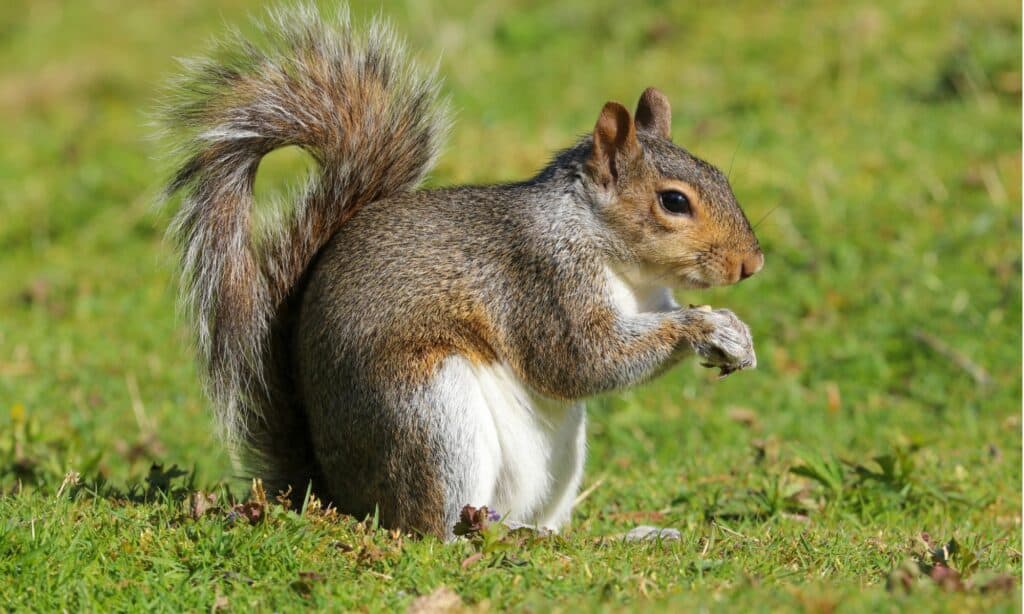
Eastern gray squirrels are about 9.1 to 11.8 inches long and weigh up to 14 ounces.
©iStock.com/Helen Davies
Red-cockaded Woodpecker
The next animal on our list you may find in Bath is the red-cockaded woodpecker. They are endemic to the southeastern United States. Generally, these small woodpeckers are 7.1 to 9.1 inches long. They have long wingspans, exceeding their body length. Red-cockaded woodpeckers have black, white, and brown feathers with black and white stripes.
As their name suggests, males sometimes have a red line on each side of their head during the breeding season. These woodpeckers forage for food on trees and mainly consume insects like cockroaches, beetles, and spiders. However, they also eat small fruits including wild berries. Although red-cockaded woodpeckers aren’t entirely monogamous, they are known for keeping the same mate for years.
They live in groups with other woodpeckers, which help care for the young.
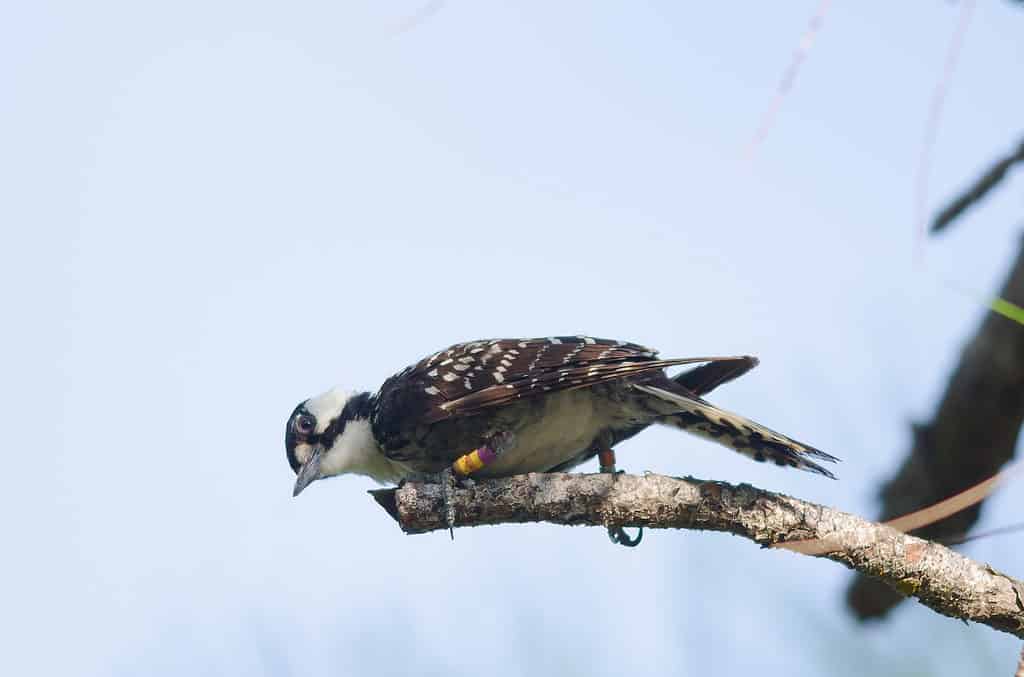
Red-cockaded woodpeckers are endemic to the southeastern United States.
©iStock.com/spates
American Woodcock
Another bird species you may encounter while in Bath is the American woodcock. They are fluffy and small shorebirds known by many names. They are sometimes called the timberdoodle or the Labrador twister. American woodcocks are popular game birds, and although the population has declined, it’s listed as Least Concern on the IUCN Red List. American woodcocks have unique proportions.
They are known for their short and plump bodies, large heads, and small legs. They also have a long and straight bill. American woodcocks are only 2.5 to 2.8 inches long but have wingspans up to 18.9 inches. These birds are excellent hiders with their brown, black, and grey plumage. They live in bushy forests and blend well hiding from predators.
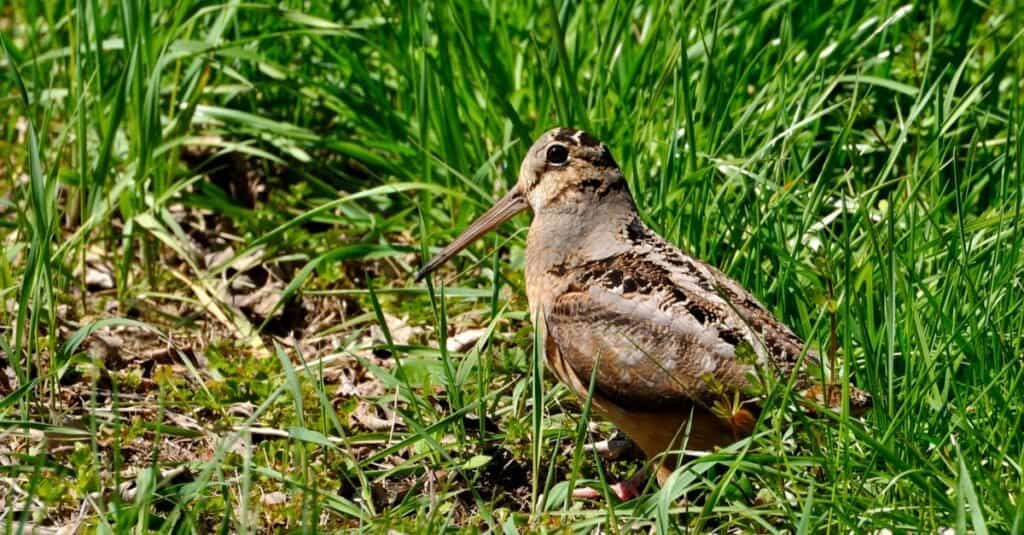
On the IUCN Red List, they are listed as Least Concern.
©Andrea J Smith/Shutterstock.com
Common Snapping Turtle
You can also find snapping turtles in the oldest town in North Carolina. The common snapping turtle is a large turtle species native to mainly eastern North America. They range from southeastern Canada down to Florida and Texas. Common snapping turtles are strong and muscular. They can weigh up to 75 pounds but typically weigh slightly above 22 pounds.
Common snapping turtles are found in most bodies of freshwater. They prefer shallow streams, ponds, and lakes. You can find these large turtles lying in mud with their heads slightly above the water or sunbathing on fallen logs. Common snapping turtles are excellent active hunters. They have sharp and thick claws and are fast swimmers.
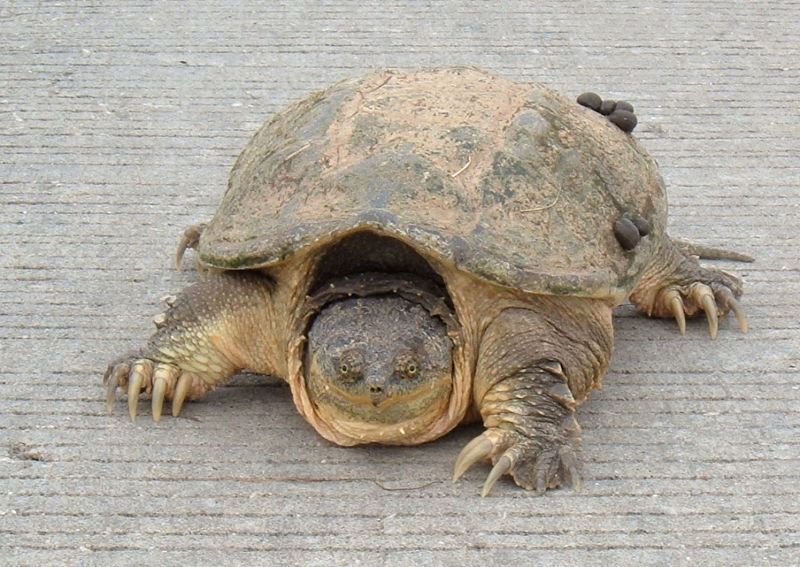
Snapping turtles live in the oldest town in North Carolina.
Common Bottlenose Dolphin
Next on our list is the common bottlenose dolphin. It’s sometimes also called the Atlantic bottlenose dolphin. These social and very smart mammals have a wide range. They are one of the most well-known dolphins and are often kept in research facilities and aquariums. Common bottle dolphins are 6.6 to 13.1 feet long. They are long, sleek, grey, and weigh as much as 1,430 pounds!
Common bottlenose dolphins aren’t picky eaters and they swallow their food whole. They consume fish, eels, and squid. They can hunt in schools of dolphins or individually. Common bottlenose dolphins have also been recorded playing with their food! They communicate with sound and also with body language, including splashing with their tails.

Common bottlenose dolphins can grow up to 13.1 feet long!
©iStock.com/Lefteris_
Eastern Glass Lizard
The last animal on our list you may encounter while visiting the oldest town in North Carolina is the eastern glass lizard. This lizard doesn’t look like most lizards you’re likely used to. Eastern glass lizards are smooth, legless, and endemic to the Southeastern United States. Because of their lack of legs, they are often confused for snakes. Eastern glass lizards are 18 to 43 inches long including their tail.
Not including their tails, they are only 12 inches long. Eastern glass lizards are vibrant with unique markings. You can find these lovely lizards near wetlands and in moist soil. They are also resistant to salty conditions, meaning you may find them in coastal dunes. Eastern glass lizards mainly consume insects and bird or snake eggs.
Since they aren’t very big, they have many predators including raccoons, cats, and foxes.

Eastern glass lizards are legless lizards.
©iStock.com/Weber
Where is Beaufort County, North Carolina Located on a Map?
In North Carolina, Beaufort County stands as a county in its own right. According to the 2020 census, it is home to a population of 44,652 residents. The county seat is Washington, and its establishment dates back to 1705 when it was founded as Pamptecough Precinct.
Here is Beaufort County, North Carolina on a map:
The photo featured at the top of this post is © GJones Creative/Shutterstock.com
Thank you for reading! Have some feedback for us? Contact the AZ Animals editorial team.







